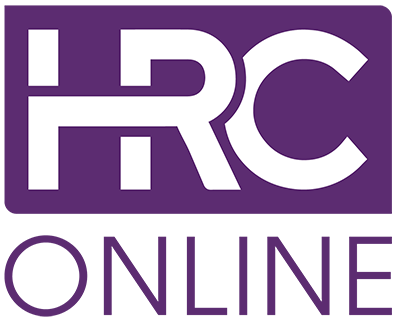
If you’re learning about people management, at some point you will come across the great Irish philosopher and innovator of organisational theory, Charles Handy.
He is probably best known for his ‘Organisational Culture model’, which identifies four distinct types of organisational cultures:
- Power Culture
- Role Culture
- Task Culture
- Person Culture
Today, let’s give you a crash course in these four types of business cultures.
- Everything comes from the top: Power Culture
In organisations with a Power Culture, a few people decide at the very top of the business. Usually sitting on the board, or with titles like Chief or Director of, these powerful managers and leaders expect everyone below them to follow their instructions and not really think for themselves too much.
Employees in these environments have little autonomy, and communication is top down. This culture can cause swift decision-making but may stifle innovation and employee input.
The Telltale Signs of a Power Culture
- Centralised power
- Limited employee input
- Decisions made by a few key people
2. We Are All Special in Our Own Ways: Role Culture
Role Culture is common in organisations where employees are placed in roles based on their expertise, qualifications, and interests. Employees are usually responsible for their own special areas and tasks given out are delegated according to an individual’s specialisation. Head of Finance, and Marketing Manager are job titles in a Role Culture and their responsibilities are easily defined. In this environment, everyone knows their job and handles their specific duties. Power comes with accountability, and employees are encouraged to take ownership of their work.
The Telltale Signs of a Role Culture
- Well-defined roles
- Accountability for specific tasks
- Clear hierarchies
3. Teamwork Makes the Dream Work: Task Culture
In a Task Culture, teams are formed to solve problems or achieve specific goals. It can feel a lot like an adventure or a sport. These organisations rely on collaboration, with groups of employees sharing common skills or interests working together. Job titles are usually less well defined in a Task Culture and might focus on what they achieve, like Head of Culture, or Head of People. The strength of the culture is adaptability and collaboration, often leading to creative solutions, as each team member contributes equally to the success of the project.
The Telltale Signs of a Role Culture
- Team-based problem-solving
- Collaboration and shared responsibility
- Innovation-driven
4. It’s All Me, Me, Me: Person Culture
When people are more important than the organisation itself, you’ve got a Person Culture. Big egos, big arguments, no loyalty. Employees are primarily focused on their own goals and interests, often at the expense of the organisation. These companies often struggle with employee retention, as workers view the organisation as merely a means to their own ends rather than something to be invested in.
The Telltale Signs of a Person Culture
- Employee-centric
- Individual goals prioritised over organisational goals
- Weak organisational loyalty
The Importance of Organisational Culture
Charles Handy said that each company has its own unique culture that affects everything from decision-making processes to employee behaviour and interactions. He said that understanding and aligning organisational culture means a productive and stress-free work environment. Handy’s model helps leaders identify and shape the type of culture that will most benefit their organisation.
By identifying and adapting to these cultural types, organisations and companies make more informed decisions, improve employee satisfaction, and enhance overall productivity. Handy’s insights remain a key way to show organisational culture, and you should quote him often in your answers!
Further Reading
Marr, B. (2018) – Why Data is HR’s Most Important Asset. Forbes. Available at: https://www.forbes.com/sites/bernardmarr/2018/04/13/why-data-is-hrs-most-important-asset/#3f05e2926b0f
Martindale, N. (2014) – How can HR use neuroscience? Available at: https://www.hrmagazine.co.uk/article-details/how-can-hr-use-neuroscience
Maslow, A.H. (1943) – Preface to motivation theory, Psychosomatic Medicine. Available at: https://journals.lww.com/psychosomaticmedicine/Abstract/1943/01000/Preface_to_Motivation_Theory.12.aspx
Mason, J. (2006) – Mixing methods in a qualitatively driven way, Qualitative Research. Available at: https://doi.org/10.1177/1468794106058866
McCord, P. (2014) – How Netflix Reinvented HR. Harvard Business Review. Available at: https://hbr.org/2014/01/how-netflix-reinvented-hr
McGrath, J.E. (1981) – Dilemmatics: The Study of Research Choices and Dilemmas, American Behavioral Scientist. Available at: http://eric.ed.gov/ERICWebPortal/detail?accno=EJ255600
Merriam-Webster (2023) – Definition of paradox. Available at: https://www.merriam-webster.com/dictionary/paradox
Merrill, M. (2002) – Instructional Transaction Theory: An Instructional Design Model based on Knowledge Objects, Educational Technology. Available at: https://www.jstor.org/stable/44428337
Meyer, J.P. and Allen, N.J. (1991) – A three-component conceptualization of organizational commitment, Human Resource Management Review. Available at: https://doi.org/10.1016/1053-4822(91)90011-Z
Ochsner, K.N. and Gross, J.J. (2008) – Cognitive Emotion Regulation: Insights from Social Cognitive and Affective Neuroscience, Current Directions in Psychological Science. Available at: https://doi.org/10.1111/j.1467-8721.2008.00566.x
Meyer, J.P. et al. (2012) – Affective, normative, and continuance commitment levels across cultures: A meta-analysis, Journal of Vocational Behavior. Available at: https://doi.org/10.1016/j.jvb.2011.09.005
Nograšek, J. and Vintar, M. (2014) – E-government and organisational transformation of government: Black box revisited, Government Information Quarterly. Available at: https://doi.org/10.1016/j.giq.2013.07.006
Morgan, D.L. (2014) – Integrating Qualitative and Quantitative Methods. Los Angeles: Sage. Available at: https://www.jstor.org/stable/42855942
Razi, N. and Garrick, J. (2019) – The “betrayal effect” on post-acquisition integration: A performative appraisal of management control systems in a merger context, Qualitative Research in Accounting and Management. Available at: https://doi.org/10.1108/QRAM-01-2018-0004
Ramona, T. and Anca, S. (2013) – Human Resource Management – From Function to Strategic Partner, The Journal of the Faculty of Economics. Available at: https://explore.openaire.eu/search/publication?articleId=od_______645::8ce4501ec1584d9c36fbd9773fc9abc8




